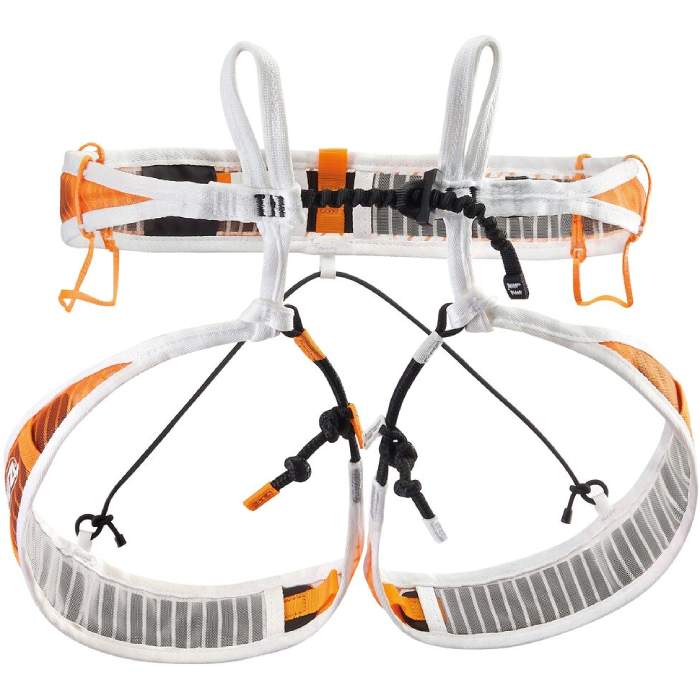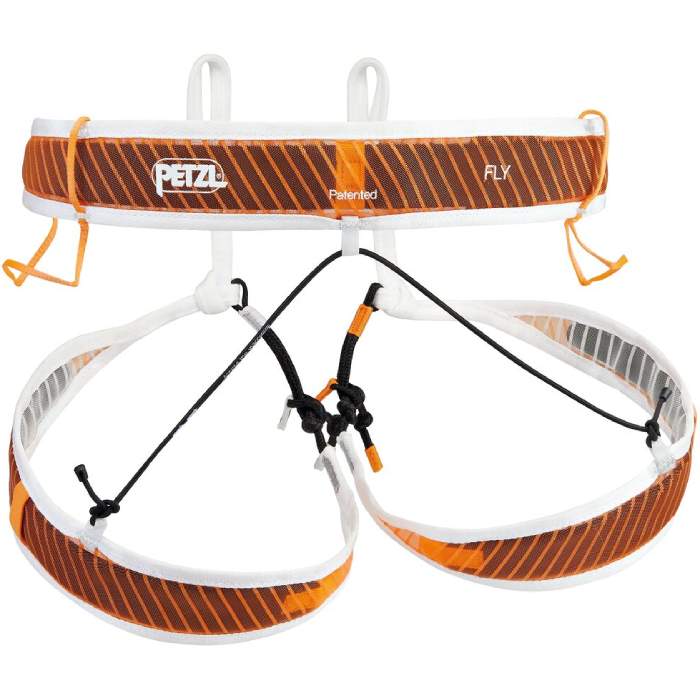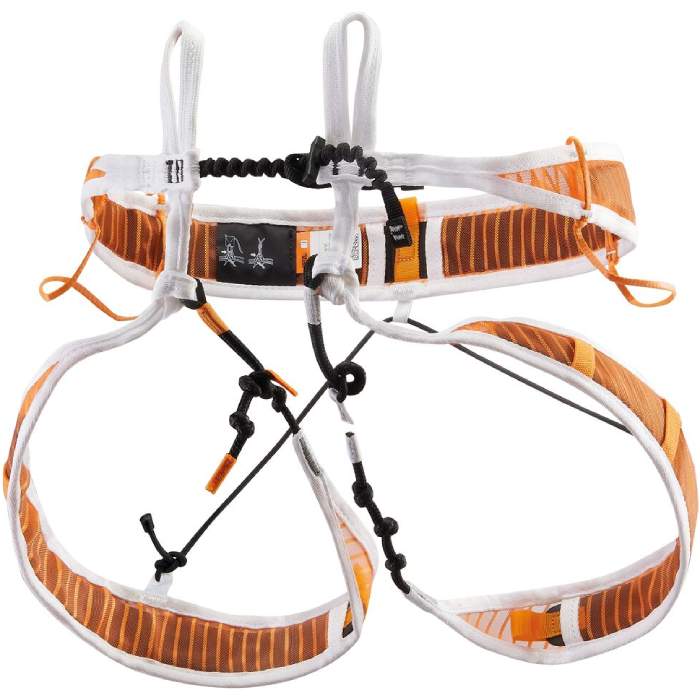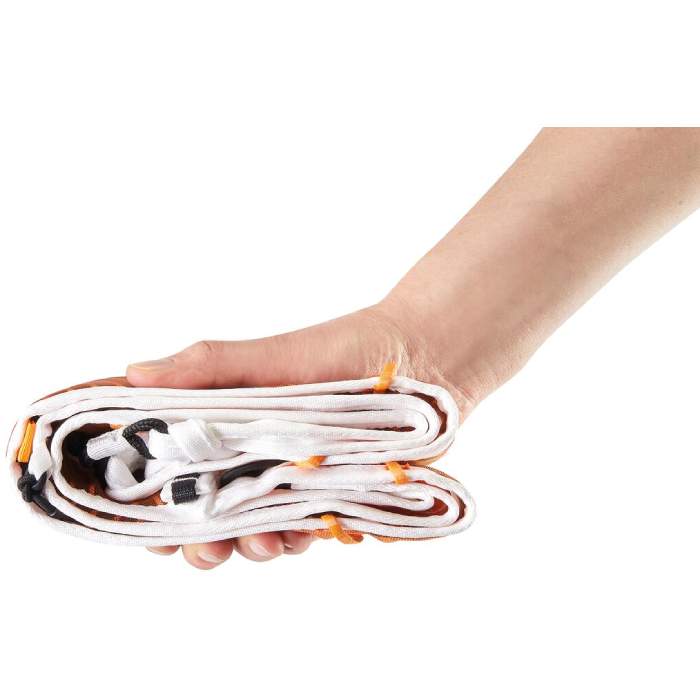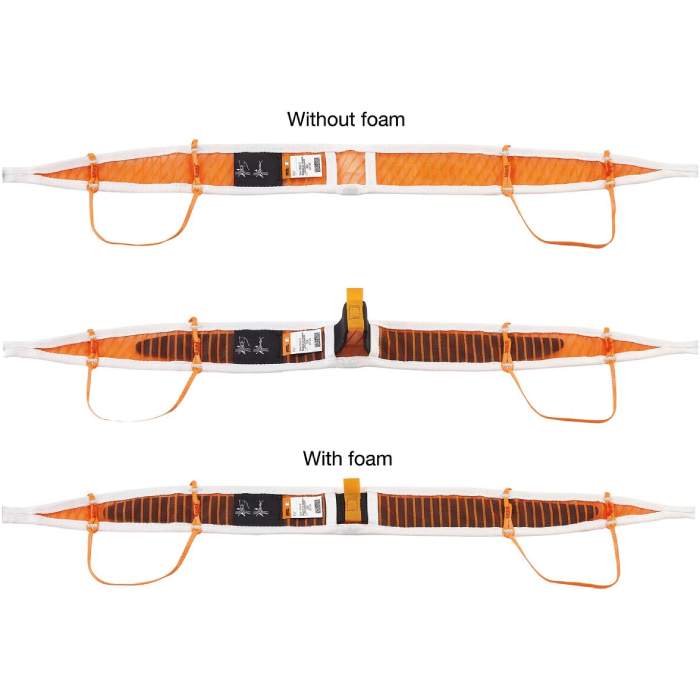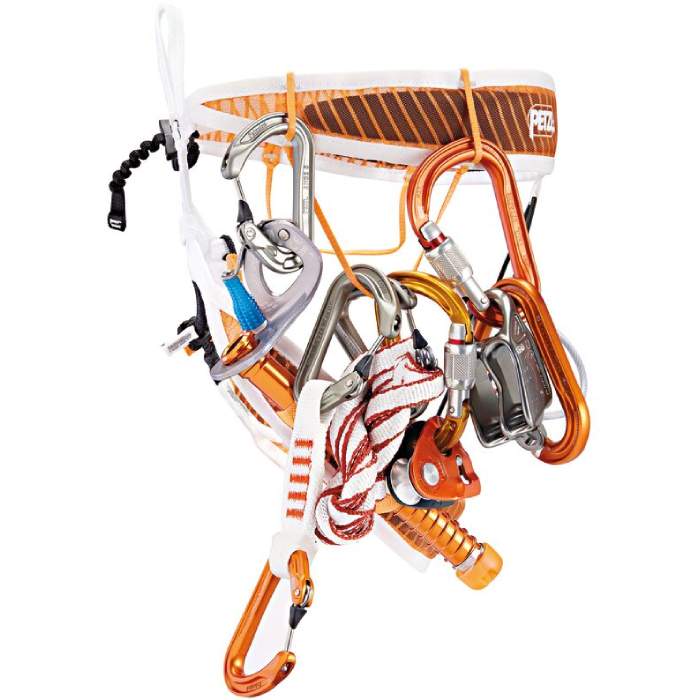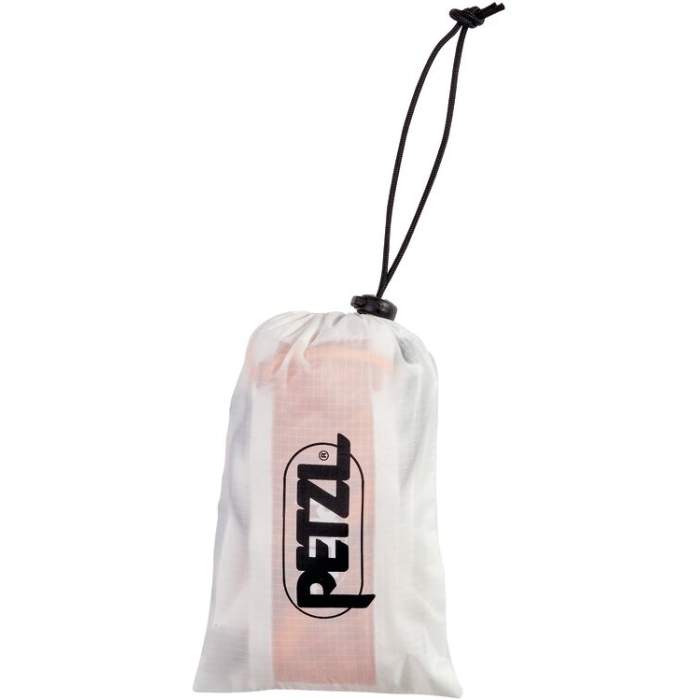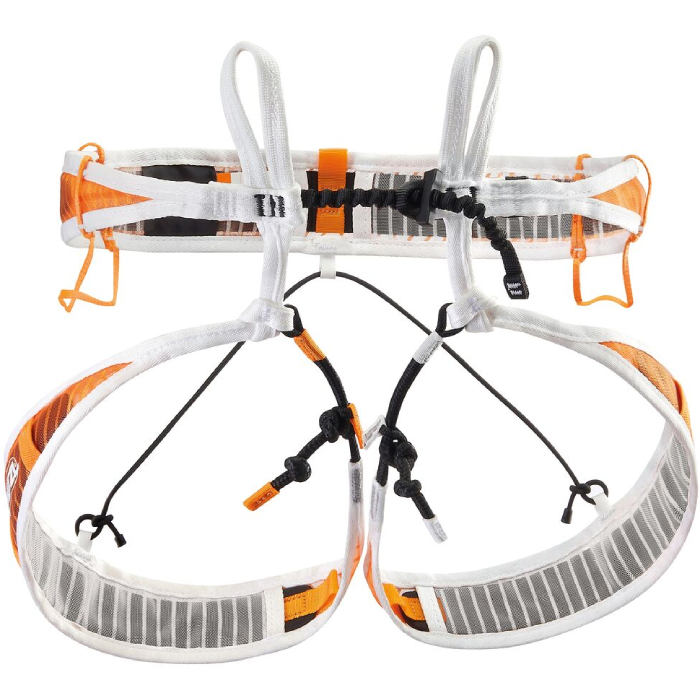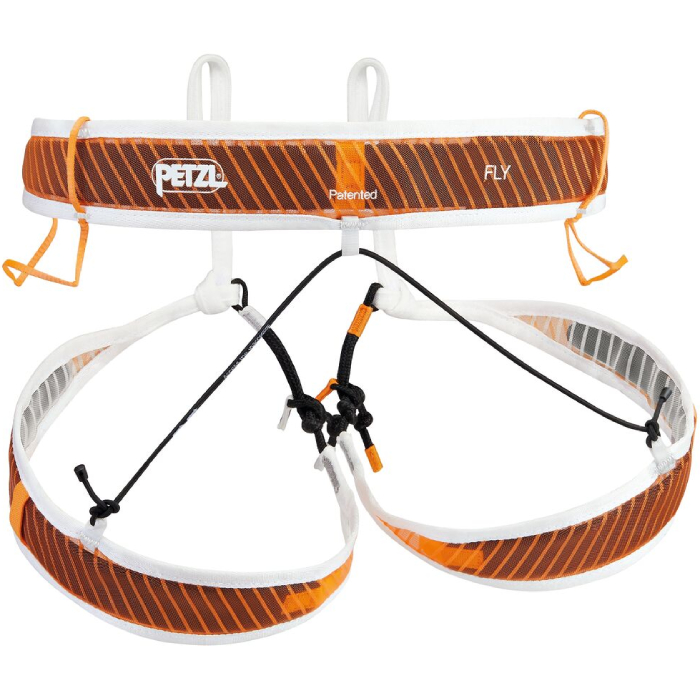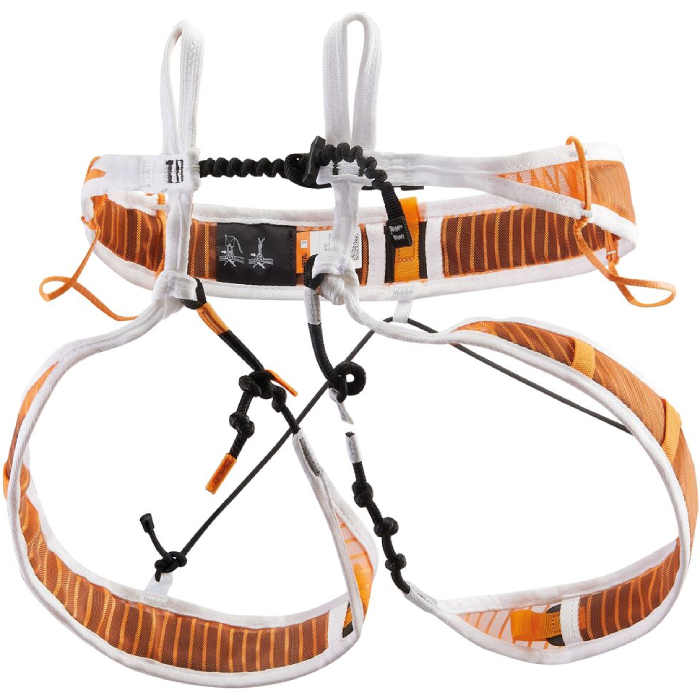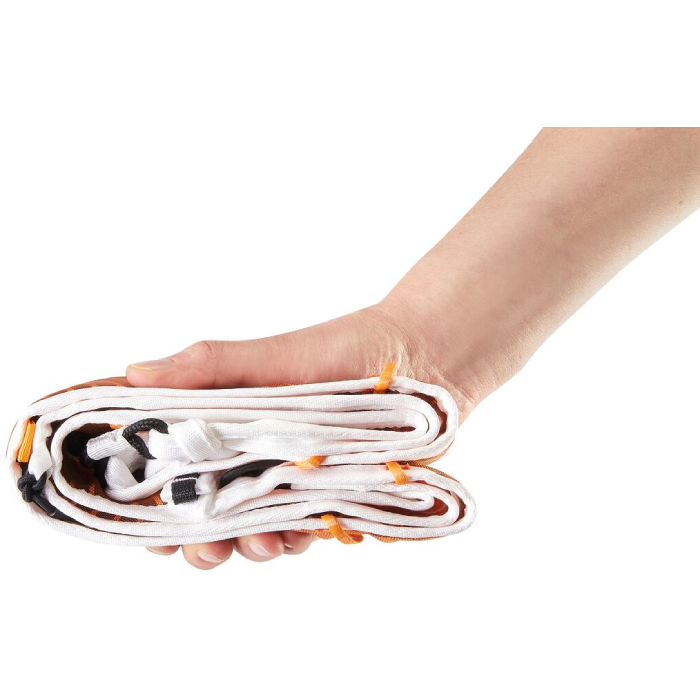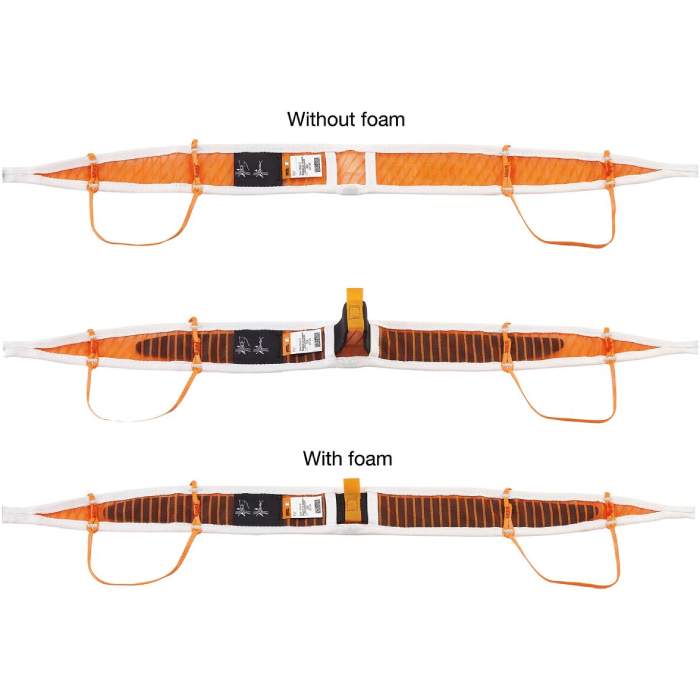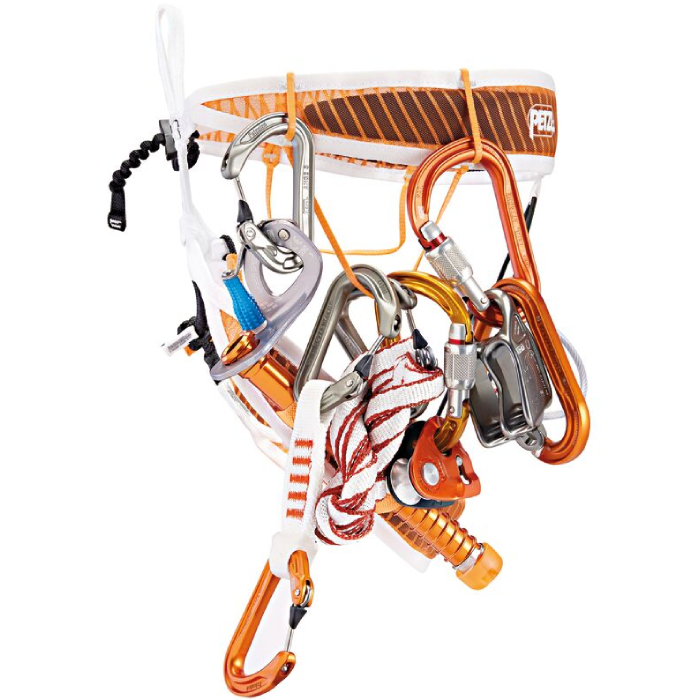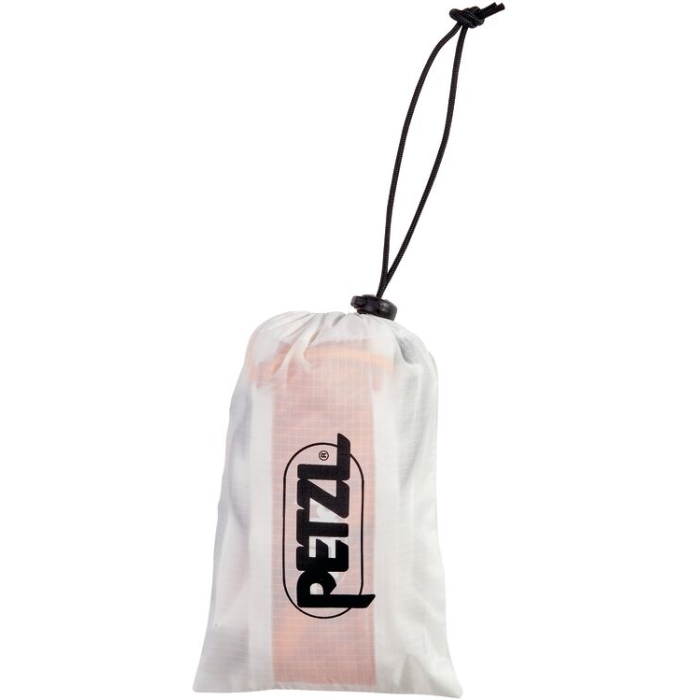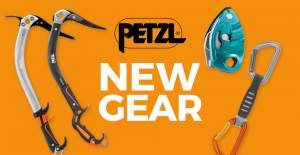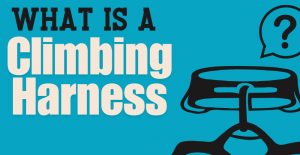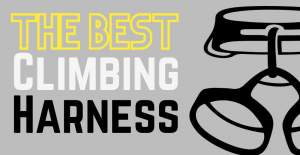Describes with words and helpful photos, how to protect your harness.
Fly
Description
Ultra-lightweight and adjustable harness for technical mountaineering and ski mountaineering.
The lightest Petzl harness! FLY is a minimalist harness specifically designed for technical mountaineering and ski mountaineering. It's easy to put on without removing your skis or crampons, making it a practical solution. It’s also modular, with removable padding in the waistbelt and leg loops, so you can adapt the level of comfort and weight. Gear loops and ice screw retainers allow you to keep your gear within reach.
- Lightweight and compact, ideal for the most demanding mountaineers and skiers:
- Designed for technical mountaineering and ski mountaineering
- Can be donned with both feet on the ground while wearing skis or crampons
- Only 100 g (size M) with comfort foam removed, and 130 g with foam; the extremely low weight and body-hugging fit offer complete freedom of movement, making the harness feel almost imperceptible
- Slim design
- Minimalist pouch allows the harness to be compressed, freeing up space in your pack - Adjustable level of comfort:
- Innovative buckle-free construction (Petzl patent): sliding toggle lock instead of metal buckle makes it quick and easy to adjust waistbelt, The leg loops are adjusted with a girth hitch
- FUSEFRAME Technology with removable foam, for adapting the comfort level of the harness to the activity; The comfort foam on the leg loops and waistbelt can be easily removed, making the harness even lighter
- Comfort foam optimally distributes the load to make hanging in the harness more comfortable - Technical and durable:
- Two gear loops and four additional loops to organize and carry gear required for technical outings
- Retainer with silicone interior on each leg loop, for holding an ice screw
- Attachment points, webbing, and gear loops reinforced with high-modulus polyethylene (HMPE), for greater resistance to abrasion and rubbing - Material(s): Nylon, polyester, high-modulus polyethylene
- Harness comes in a protective carry pouch
- Also comes with minimalist pouch for storing the harness when the foam is not in use
Retail price
When you click a link below and then checkout online, no matter what you buy (climbing gear or not), we get a small commission that helps us keep this site up-to-date. Thanks!
Weight (g)  WeightIn grams, the weight, as stated by the manufacturer/brand. If there are differences in weight (due to multiple sizes or optional accessories) we'll list them here. The default weight is the middle-most size, often this is size M. | 100 g S: 90 g / 3.2 oz
M: 100 g / 3.5 oz
L: 110 g / 3.9 oz
|
| Fit | Unisex |
| Sizes | XS, S, M, L, XL |
Gear Loops  Number of Gear LoopsGear loops are used to hold gear (quickdraws, cams, etc) onto your harness. 4 gear loops is most common. 
0 - 1 Gear LoopsMost often on full body harnesses or guide/gym style harnesses. 2-3 Gear LoopsMostly found on lighter harnesses made for [ski] mountaineering or high-end sport climbing where weight is a high priority. 4 - 5 Gear LoopsThe standard/most common number for climbing harnesses. Perfect for sport and trad. More Than 6 Gear LoopsDesigned for long multi-pitch and big wall climbing, found on harnesses made to hold the maximum amount of gear. Worth ConsideringOccasionally, the number of gear loops will change on a harness model depending on the size. There could be 7 gear loops for the med/large but only 5 gear loops for the xsmall/small. In this case we list the highest number for the filters, and then write an explanation on the product page like, “Size S/XS can only fit 5 gear loops.” | 2 Gear loops |
Ice Clip Slots  Ice Clip SlotIce clipper slots are made to fit a carabiner that holds ice screws. These slots are generally only used by ice climbers but there is no disadvantage to having them on your harness. 
Less than 40% of harnesses will have ice clipper slots. And those harnesses will usually have 2 or 4 slots, often located next to, or between, the gear loops. | No |
| Belay / Tie-In | Tie-In |
| Waist Buckle Type | None |
| Leg Buckle Type | None (it stretches) |
| Drop Seat | No |
Haul Loop  Haul LoopTrad climbers often look for a haul loop as they're intended to haul a rope (second line) or pack (while you climb the chimney). 
A haul loop can also hold shoes or other accessories. Although not the intended use, it is also commonly used to hold a chalk bag. | No |
| Certification | CE, EN, UIAA |
| Size Chart | S (will fit the upper range of XS) |
No reviews yet.
I found the Petzl Fly harness ideal for glacier travel and splitboarding. I can’t speak to more advanced or alpine intentions yet, but for my intended use, the Fly will continue to be my go-to harness. It’s comfortable, light, and you pretty much forget that you’re wearing it while skinning, booting, and riding. Then, add in the sweet packability and the fact that you can put on the harness with skis or board on. Score.
A checklist helping you monitor your harness health, helping to know when to retire your harness.
Helpful instruction for inspecting Petzl harnesses.
How to use Petzl Harness, warnings, lifetime with instructional pictures
A pictoral representation of UIAA-105 and EN-12277 standards for harnesses.
The UIAA equipment standard provides a baseline for equipment performance in a test lab under controlled conditions on new equipment. Although these test conditions are relevant to the conditions encountered climbing, conditions encountered at the crags and the condition of the equipment are equally important. This recommendation from the UIAA member federation The British Mountaineering Council (BMC) provides vital equipment information that is NOT explicitly addressed in the standard, particularly failure modes of the equipment and recommendations for the use, inspection, maintenance, and retirement of equipment.

